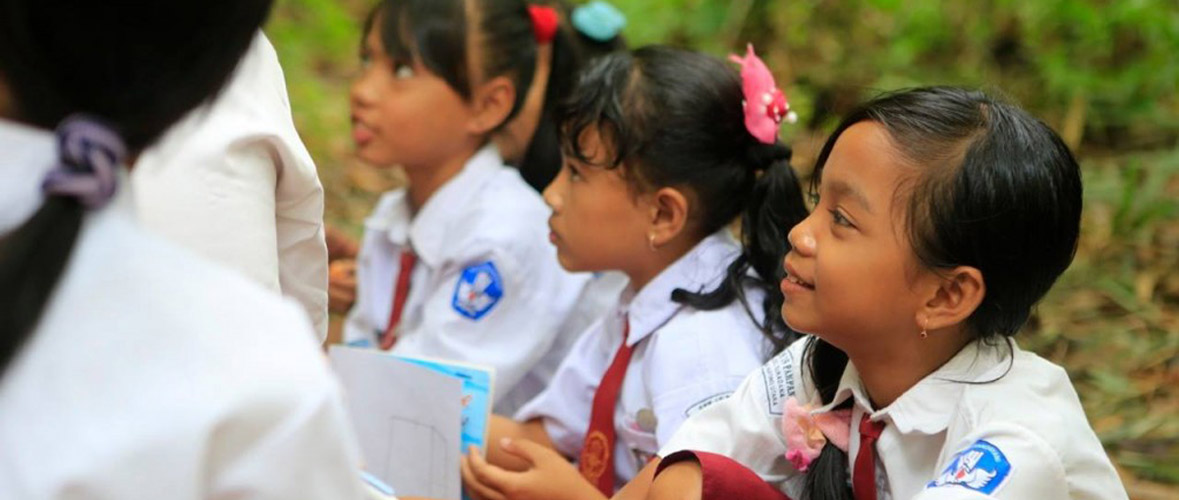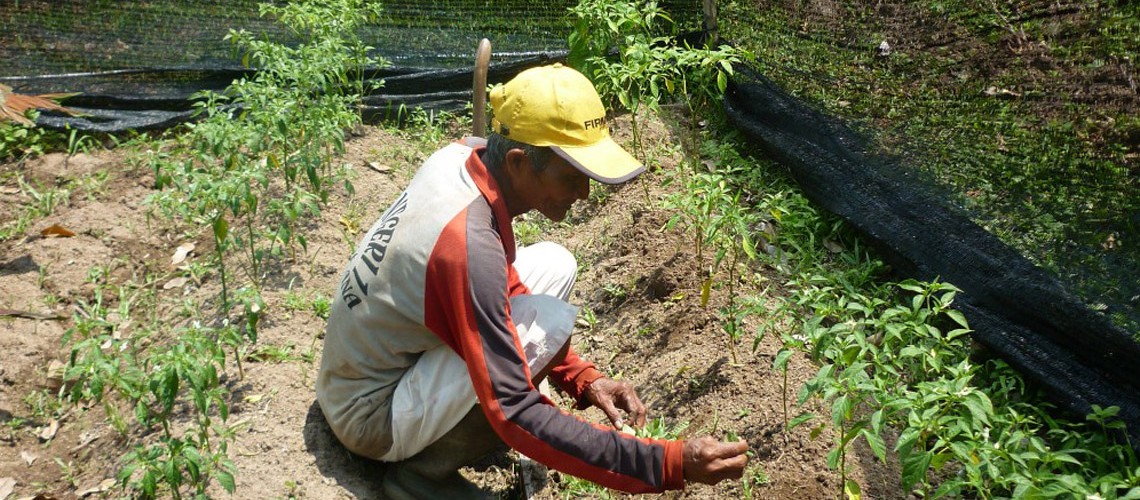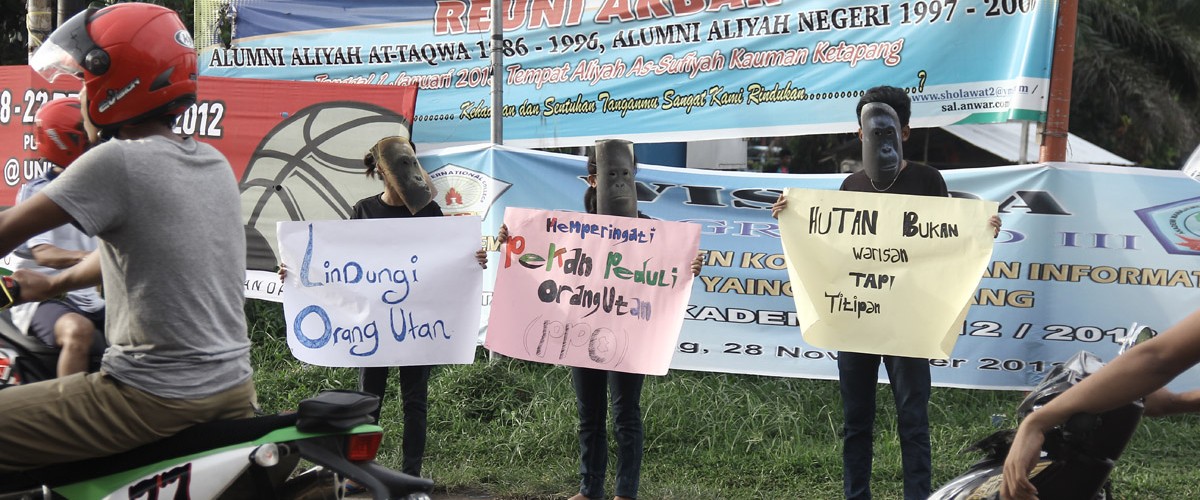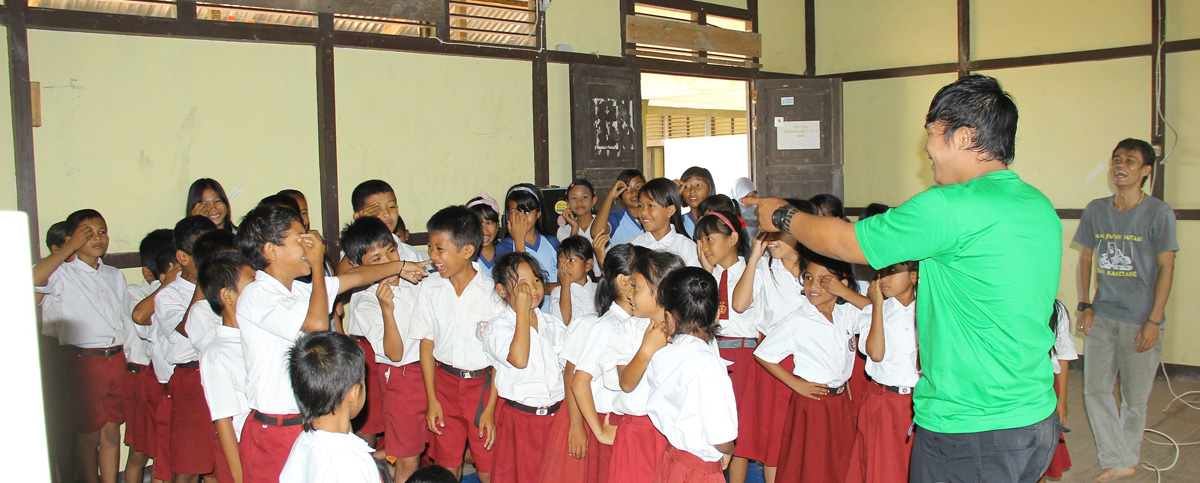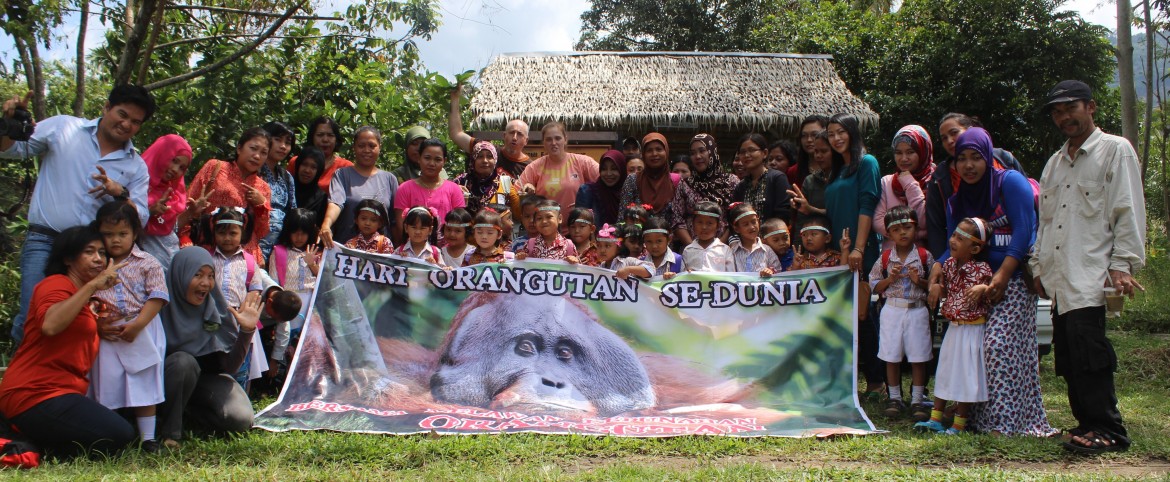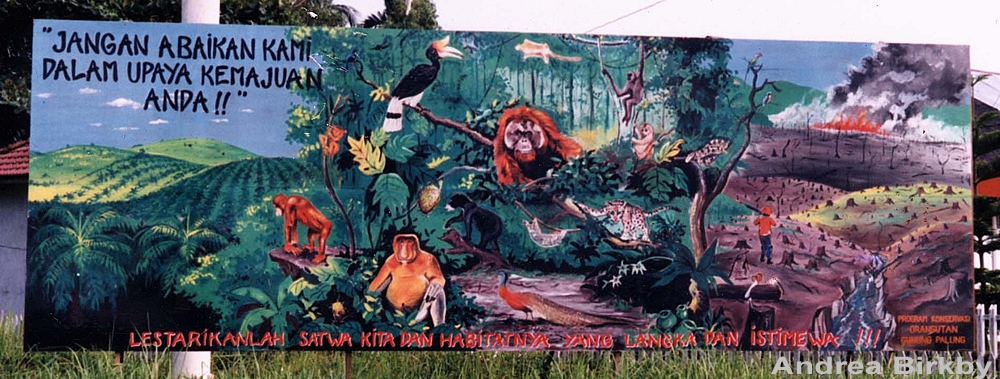By Muhammad Isa
Earlier this year we were contacted by researchers at IIED who are developing the SAGE methodology for use in protected and conserved areas around the world. The SAGE initiative aims to enable stakeholders to assess the status of governance and equity, plan actions to improve, and monitor progress. The first version of the SAGE methodology was developed in 2019, followed by the first round of piloting in 8 different countries. In August 2020, SAGE version 2 was developed for a second round of field testing. The greater Gunung Palung conservation landscape is part of this piloting, and we conducted the assessment this past month. To learn more, click here. Below, SAGE Lead Facilitator Muhammad Isa shares his experience running the assessment among stakeholders of the Banjar Lestari Customary Forest, where GPOCP has worked since 2015.

Site-level Assessment of Governance and Equity (SAGE) is a tool designed to improve conservation governance and equity for nature and society. SAGE is an assessment that is directly carried out by the “actors” involved in the conservation landscape. The main objective is to improve governance and conservation equity in an effort to achieve better outcomes for nature and society, especially for the poor in local communities and for indigenous peoples. This past month, SAGE was carried out by members of the Padu Banjar community, on eight different aspects of governance and equity. Actors are grouped according to common interests and guided by a team of trained facilitators. Each question has four potential answers (scored 0, 1, 2 or 3) that represent a range from best practice (3) to practices that have deficiencies/room for improvement (0). The SAGE assessment concludes with participants developing and sharing ideas for actions that can improve conservation governance and equity at the site level. A report of the assessment is generated and then shared with all participants and associated organizations so that they better understand the situation and can support relevant ideas for action. Afterwards, the “Action Phase” prioritizes actions to plan, implement and monitor the proposed actions chosen by the actors.
Governance refers to how decisions are made and how people with different interests and rights, or key “actors”, influence decisions, and how actors with important responsibilities are held accountable. The principles for the assessment of protected area governance in SAGE are based on principles adapted by the IUCN (International Union for Conservation of Nature). Good governance in conservation is about governance that is fair and effective in achieving its objectives. Equity is about all aspects of fair and good governance in achieving conservation area goals. Equity has 3 dimensions, namely recognition (respect for actors and their rights), procedure (participation, transparency and accountability, access to justice/dispute resolution, and fair law enforcement), and distribution (reduction of negative impacts and equitable benefit sharing).
In West Kalimantan, where SAGE was conducted, we assessed the Governance and Equity for the “Banjar Lestari” Customary Forest which is part of the Paduan River Peat Protected Forest Area in Padu Banjar Village, Kayong Utara Regency, West Kalimantan. The Customary Forest “Banjar Lestari” in Padu Banjar Village was officially recognized on February 27, 2017 by the Ministry of Environment and Forestry of the Republic of Indonesia with a 35-year management permit for an area spanning 2,883 hectares.

We began the planning stages of the SAGE assessment in May and the workshop was held in June 2021. The SAGE assessment was carried out by 5 key actor groups consisting of the Customary Forest Management Board (LPHD), Provincial and Regency government officials, village government, non-management community groups, and community business groups. Workshop activities were held from June 14th to 15th in Sukadana, Kayong Utara Regency. The workshop process was facilitated by a trained team of facilitators to guide the participants of each group through a series of questions about the governance principles pertaining to the local area.
Our facilitating team chose 8 different governance principles (out of the 10 total options) for the assessment, as summarized in the figure below. For each principle, the actors were presented with a series of 5 questions. Each group had to come up with a consensus score for each prompt. The graph below shows the average score per principle among the five groups of actors. The results of the group assessment show that respect for rights received the lowest score of 1.25, out of a maximum of 3. Almost all other aspects were identified as having room for improvement with a score of less than 2, namely aspects of transparency and accountability with a score of 1.53, coordination and collaboration with a score of 1.57, respect for actors with a score of 1.66, mitigation of negative impacts at 1.79, as well as participation in decisions and the achievement of conservation goals with the same value of 1.81. The principle of benefit sharing/distribution averaged a value of more than 2, at 2.15. However, as shown in the second figure, there tended to be a lot of variation in scores between the groups, so the means do not always reflect the opinions of each group or each actor.


During the second day of the workshop, each group presented the results of their discussions and the other groups responded. Groups also compared scores and discussed the reasons for the differences in the ratings decided by each group. This allowed participants to better understand different challenges and viewpoints, and identify potential actions that could be taken to improve the situation. Furthermore, the different groups of actors can identify priority actions to improve governance and equity in the management of the “Banjar Lestari” Customary Forest.

I am now working to finish up the analysis of all the data and creating a report, which will be shared with all participants as well as the team at IIED. This will allow for follow-up in the future, now that the actors have identified where there is room for improvement. Hopefully the SAGE assessment can also be carried out in the other GPOCP Customary Forests in the future.
